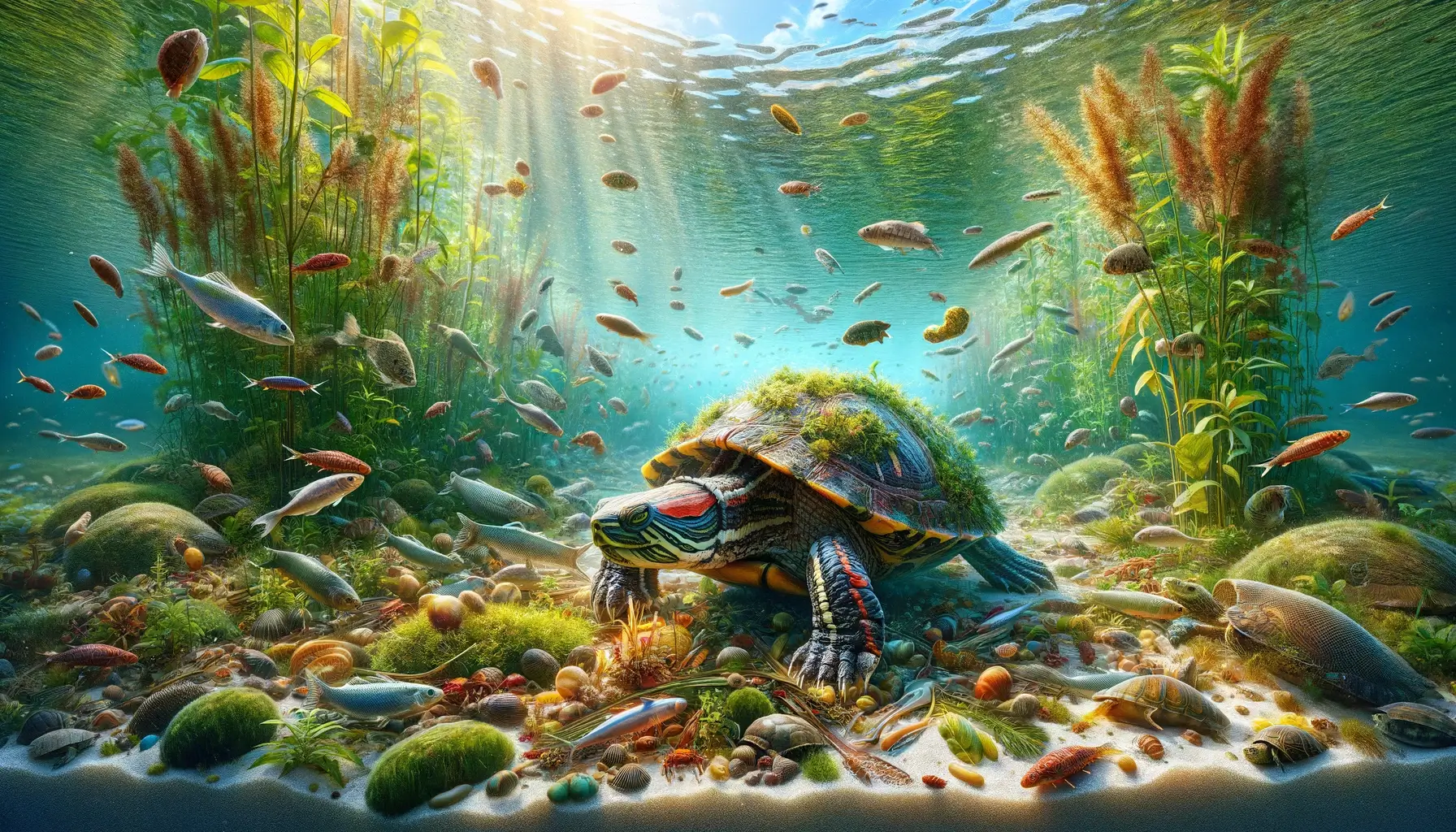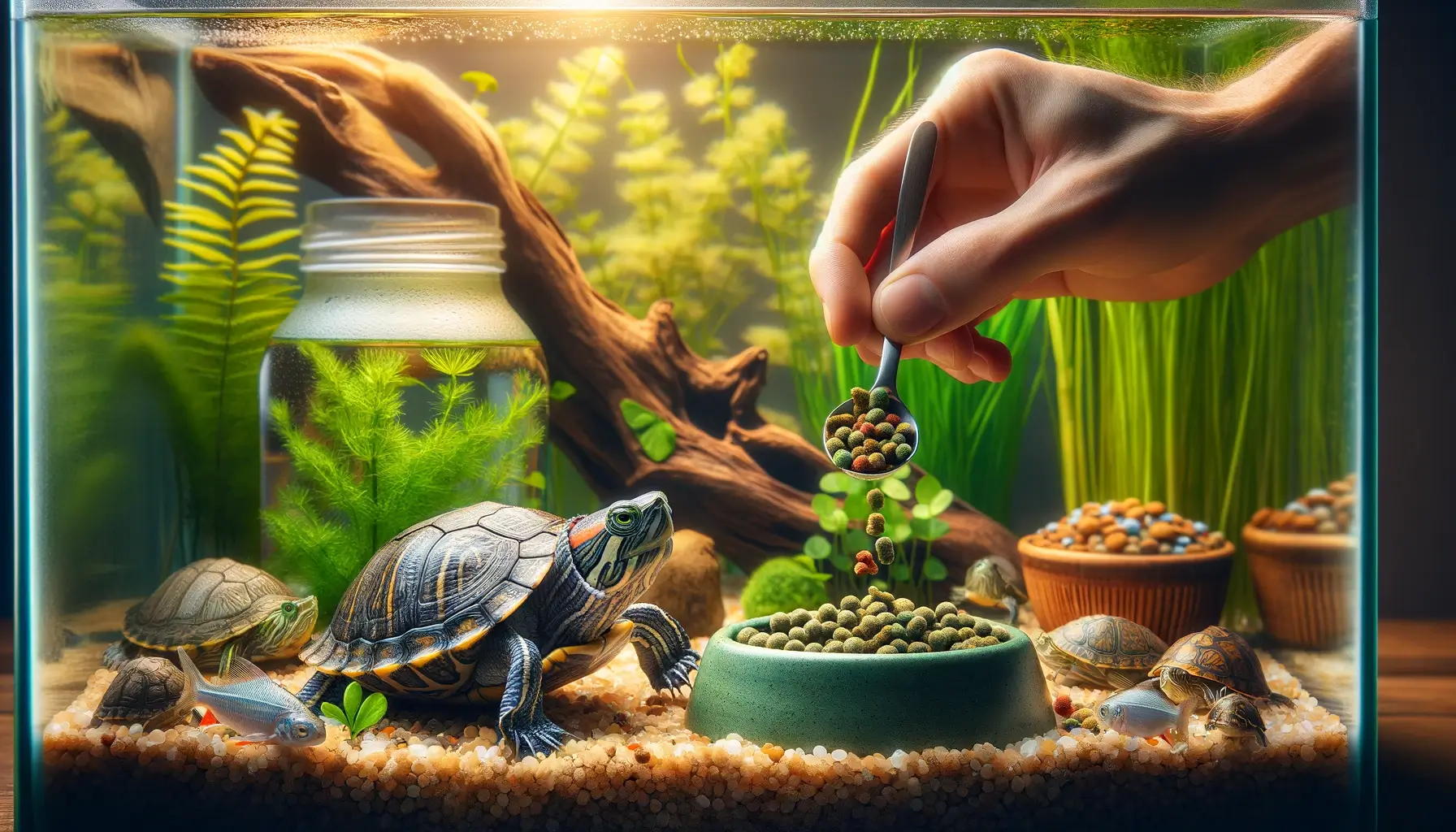Imagine you’re a sailor adrift on the vast ocean of turtle care knowledge, and you’ve just stumbled upon the intriguing island of their eating habits. You’ve probably asked yourself, “How long can these hardy creatures go without eating?” This is a question that puzzles many, not only for the sake of curiosity but also for the crucial role it plays in their care. As we navigate through this topic, we’ll uncover the factors that influence a turtle’s diet, their typical feeding habits, and their remarkable resilience in the face of food shortages. But why would a creature able to survive without food for such extended periods need a regular diet? Well, let’s continue our voyage to discover the answer.

Understanding Turtle Physiology
To fully grasp how long turtles can survive without food, you first need to understand their unique physiological traits, which are remarkably adapted to endure long periods of fasting. Turtles, both aquatic and terrestrial, have a slow metabolism. This makes them efficient users of stored energy, letting them go without eating for longer periods than most other pets.
So, how long can turtles go without eating? This largely depends on the species, age, and overall health of the turtle. In ideal conditions, some turtles can survive without food for several months. However, this isn’t a rule of thumb. It’s crucial to remember that a well-fed turtle is a healthy turtle.
Understanding turtle physiology is key to knowing how long aquatic turtles can go without eating. Water turtles, for instance, can survive without food for 4-6 months if they are healthy and well-fed before the fasting period. But again, this is not a lifestyle you should impose on your pet.
Speaking of pets, how long can pet turtles go without eating? The answer is a bit complicated. Although they can survive for a time without food, regular feeding is essential for their health and well-being. So, don’t test their limits. Feed your turtle regularly.
Factors Influencing Turtle’s Diet
While understanding the endurance of turtles without food is fascinating, it’s equally important to consider the various factors that influence their dietary needs and habits. Several elements play a significant role in determining how long can baby turtles, snapping turtles, painted turtles, red eared slider turtles, and small turtles go without eating.
Here’s what you need to know:
- Species: Different species have varying dietary needs.
- Baby turtles, being more vulnerable, often require more frequent feeding.
- Snapping turtles can endure longer without food due to their adaptive metabolism.
- Environment: The habitat of the turtle significantly affects their dietary habits.
- Painted turtles, for example, live in areas with abundant food, reducing their need to go long without eating.
- Red-eared slider turtles can also manage longer fasting periods, especially in colder climates.
Normal Feeding Habits of Turtles
Diving into the diverse world of turtle feeding habits, you’ll find that these fascinating creatures have quite specific and unique dietary routines that greatly depend on their species and environment. Turtles, like any other creatures, need food to survive. But how they eat, what they eat, and how long they can go without eating, especially those baby snapping turtles you might be curious about, can vary significantly.
Many species of turtles are omnivores, feeding on a balanced diet of plants and meat. The ratio of plant to animal matter changes with age – baby snapping turtles, for instance, start more carnivorous, then switch to a more balanced diet as they mature. However, the question of how long can baby snapping turtles go without eating can’t be answered with a simple number. It depends on their size, health, and the temperature of their environment.
In cooler temperatures, their metabolism slows down, and they can go longer without food. But don’t mistake this for a sign to neglect feeding them regularly. Ensuring a steady supply of nutritious food is key to their growth and longevity. Understanding these habits, you’re equipped to provide the best care for these remarkable creatures.
Turtles’ Adaptation to Food Shortages
When faced with food shortages, turtles have remarkable adaptations that allow them to survive for extended periods without eating. These hardy creatures can adjust their metabolism and body functions to conserve energy and nutrients, making them capable of enduring prolonged periods of starvation. Isn’t that fascinating?
Here are the key adaptations that enable turtles to survive without food:
Slowing Metabolism:
Turtles can drastically slow their metabolic rate, which reduces their need for food and oxygen. This is particularly useful during hibernation or periods of inactivity. They also have a special ability to switch to anaerobic respiration, allowing them to generate energy without oxygen for a while.
Efficient Energy Storage:
Turtles can store large amounts of fat in their bodies, which serves as a long-lasting energy source when food is scarce. Their bodies are also capable of breaking down their own muscle and organ tissues to provide essential nutrients.These adaptations aren’t just handy survival tricks. They’re a testament to the turtles’ incredible resilience and their ability to thrive in challenging environments. So, when food becomes scarce, turtles don’t just survive – they adapt and persevere.
How Turtles Survive Without Eating
Building on these adaptations, let’s explore in detail how turtles manage to survive, often for significant periods, without consuming any food at all. The key secret is their slow metabolism. Unlike us, turtles can lower their metabolic rates drastically. This physiological alteration lets them expend less energy, enabling them to survive longer without food.
In addition, turtles can draw on their stored fat for energy. Think of it as their pantry they can tap into during food shortages. They’ve also evolved to recycle urea. Instead of excreting it as waste, they use it to maintain their osmotic balance, thus reducing the need for water intake.
What’s more, turtles can hibernate, a state known as brumation. During this period, they’ll burrow into the ground or settle at the bottom of a water body, dropping their body temperatures and metabolic rates to minimum levels, essentially entering a state of suspended animation.
Health Implications of Starvation in Turtles
While turtles can endure long periods without food, it’s crucial to understand that prolonged starvation can lead to serious health implications. Starvation doesn’t just mean a lack of food; it’s a severe deficiency in vital nutrients, which can have devastating effects on a turtle’s health.

You might wonder what these health implications could be. Let’s delve deeper:
Physical Deterioration:
- Turtles may experience significant weight loss and a decrease in muscle mass.
- This can result in a weakened shell, making it more susceptible to injury and illness.
- Their immune system can also take a hit, leaving them defenseless against diseases.
Behavioral Changes:
- Starvation can lead to abnormal behaviors in turtles.
- They may become more lethargic, showing a lack of interest in their surroundings.
- Alternatively, they could display frantic food-seeking behavior, which can put them in danger.
Tips to Ensure Your Turtle Eats Regularly
Ensuring your turtle eats regularly can be a bit of a challenge, especially if it’s not showing much interest in food. To overcome this, you’ll need to become an expert in turtle behavior and diet.

Firstly, recognize that turtles are creatures of habit. They respond well to routine, so try feeding them at the same time each day. This consistency can help stimulate their appetite. Secondly, diversify your turtle’s diet. They love variety, so rotate between pellets, fruits, vegetables, and proteins to keep them interested.
Remember, the temperature of their environment plays a significant role in their eating habits. If it’s too cold, they may not feel like eating. So, maintain an optimal temperature in their habitat.Monitor the turtle’s behavior. If they’re refusing food, it could be a sign of illness, and you should consult a vet. Lastly, patience is key. Don’t force feed; allow them the freedom to eat at their own pace.
In essence, understanding your turtle’s needs and behavior is critical to ensuring they eat regularly. With these tips, you can create a feeding regime that works for both you and your shelled friend.

